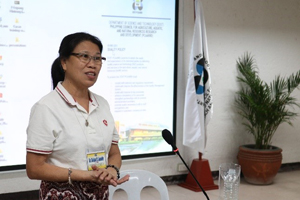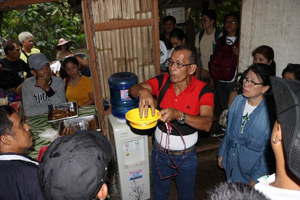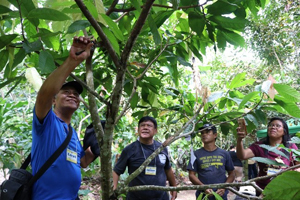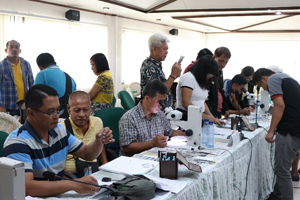 Cacao growing in the Philippines is recently becoming more popular because of increasing global demand for dried fermented cacao beans. But with the threat of climate change on cacao production, there is a need to address climate variability and extreme events through the help of science and technology.
Cacao growing in the Philippines is recently becoming more popular because of increasing global demand for dried fermented cacao beans. But with the threat of climate change on cacao production, there is a need to address climate variability and extreme events through the help of science and technology.
To address this, the Forestry and Environment Research Division (FERD) of the Philippine Council for Agriculture, Aquatic and Natural Resources Research and Development of the Department of Science and Technology (DOST-PCAARRD) conducted a training-workshop titled, “Strengthening Sustainable Cacao Farming System in the Philippines in Response to Climate Change.” It was attended by 25 participants representing various agencies and cacao farmer-cooperatives from different regions.
Dr. Divina Amalin, Professor and Head of the Biological Control Research Unit of De La Salle University (DLSU), facilitated the training-workshop. Her team explored ways to provide the participants with various skills and techniques in establishing a sustainable system of cacao farming dominated by biological and ecological approach.
The five-day training-workshop involved lectures and hands-on training about cacao production, processing and marketing, cacao pest management, and rehabilitation, among others.
 According to Ruben Oliquinio, owner of the Rumnesco Farm in Nagcarlan, the training-workshop was very helpful to them because of the new knowledge on how to identify, prevent, and control insect pests and diseases of cacao.
According to Ruben Oliquinio, owner of the Rumnesco Farm in Nagcarlan, the training-workshop was very helpful to them because of the new knowledge on how to identify, prevent, and control insect pests and diseases of cacao.
Participants were also able to develop farm plans that are profitable, environment friendly, and socially relevant.
“The training-workshop helped me have a wider understanding on cacao farming profitability, while contributing to environmental sustainability,” said Mr. Frenuel Dulnuan, a faculty-researcher and cacao farmer from Ifugao State University.
Classified under PCAARRD’s capability building and R&D governance banner program, the training-workshop was conducted to impart knowledge on climate change; understand the potential effect on cacao production; and learn how to mitigate climate change.



